A fifth encrypted bottle post has been found in the river Alster in Hamburg. Still, nobody seems to have a clue what these strange messages mean.
The Alster bottle post mystery is one of the strangest crypto mysteries I have ever covered on this blog. Here’s what has happened so far:
- In October 2016, an encrypted bottle post was found in the Isebekkanal, a sidearm of the river Alster in Hamburg, Germany (thanks to Dominique Eggerstedt for the hint).
- On January 24, 2017, a similar message was discovered on the South-East bank of the Außenalster, near the Restaurant Kajüte (thanks to Alex Vladi for the hint).
- In late April 2017, Tuncel Biyikli informed me about another bottle post. He found it on the eastern bank of the Außenalster.
- In September 2017, Hans von Jagow sent me a picture of another bottle post of the same kind. He found it drifting on the water while he was rowing near the Krugkoppelbrücke, which is close to the finding place of bottle 3.
Last week, I received an email from Katrin Reischert. Aleady in June 2017, she had found a bottle post in the Isebekkanal, near the Bundesstraße, next to the Kaifu.
This means that we now have five encrypted Alster bottle posts. The finding places can be seen on the following map:
Bootle post 5
Here’s picture of the bottle post Katrin Reischert sent me:
Like the four other bottleposts, this one contains an encrypted (?) text with many German cleartext fragments. Among other words, I can read SCHNELLBOOT, POSTFINANZ, and MÄDCHEN. All in all, this cryptogram looks pretty similar as the ones already known.
Bottle post 1
Here’s a picture (taken by Dominique Eggerstedt) of the first Alster bottle post:
This is the message contained in the bottle:
Many words can be read, while other parts of the text seem to have no meaning.
Bottle post 2
The second bottle post looks like this (source: Facebook):
Bottle post 3
Here’s the third message (picture taken by Tuncel Biyikli):
Again, the message contains a number of German cleartext words, e.g., MÄDCHEN, STURMBEFEHL, and HÖCHSTGEFAHR.
Bottle post 4
Here’s the picture Hans von Jagow provided me:
Here’s the text part (for an even higher resolution check here):
Like the other three Alster bottle post messages this one consists of letter sequences, the purpose of which is unclear. A number of German words can be spotted, e.g., UBOOTE and DIEGRÖßTEN.
What is it all about?
I still have absolutley no idea what all these messages are about. Here are a few hypotheses:
- Alternate Reality Game (ARG): ARGs usually start with messages (e.g. letters) being sent to selected people. These messages usually contain a call to action (e.g., “we need your help to save the world, call 123-456-7890”). While it seems well possible that the organizers of an ARG use bottle posts to start their game, none of the messages found so far contains a call to action. Perhaps, the bottle post messages played a role in a later stage of an ARG, when some instructions about how they had to be interpreted were already known.
- Geocaching: Many crypto puzzles created today have a relationship to Geocaching. Is this the case here, too? To be honest, I can’t see how these messages fit into a Geocaching scenario (locating a bottle post using a GPS doesn’t make much sense).
- Performance art: A few years ago some 20 encrypted notes were found at a university in London, Canada. In 2014 it became known that these messages all were created by a local artist. So, the crypto mystery turned out to be a performance art project. It is, of course, possible that the Alster bottle post mystery has a similar origin.
- Hoax: Of course, somebody might have created theses messages just to create a mystery – and to make himself laugh about the people trying to solve it.
Can a reader say more about the Alster bottle post messages? Any hint is welcome.
Follow @KlausSchmeh
Further reading: Kaliningrad’s second mystery: Who can break this encrypted bottle post?
Linkedin: https://www.linkedin.com/groups/13501820
Facebook: https://www.facebook.com/groups/763282653806483/

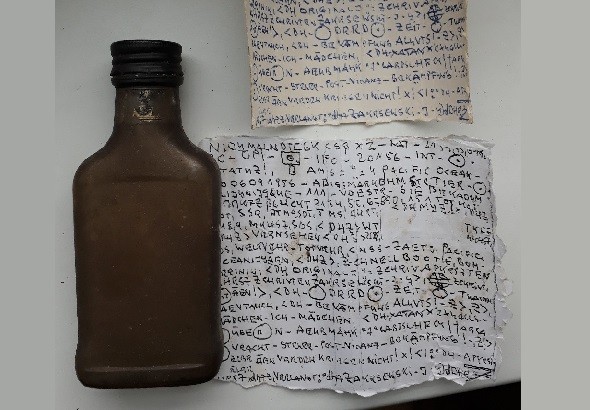
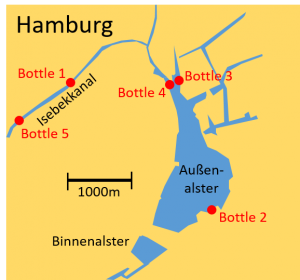
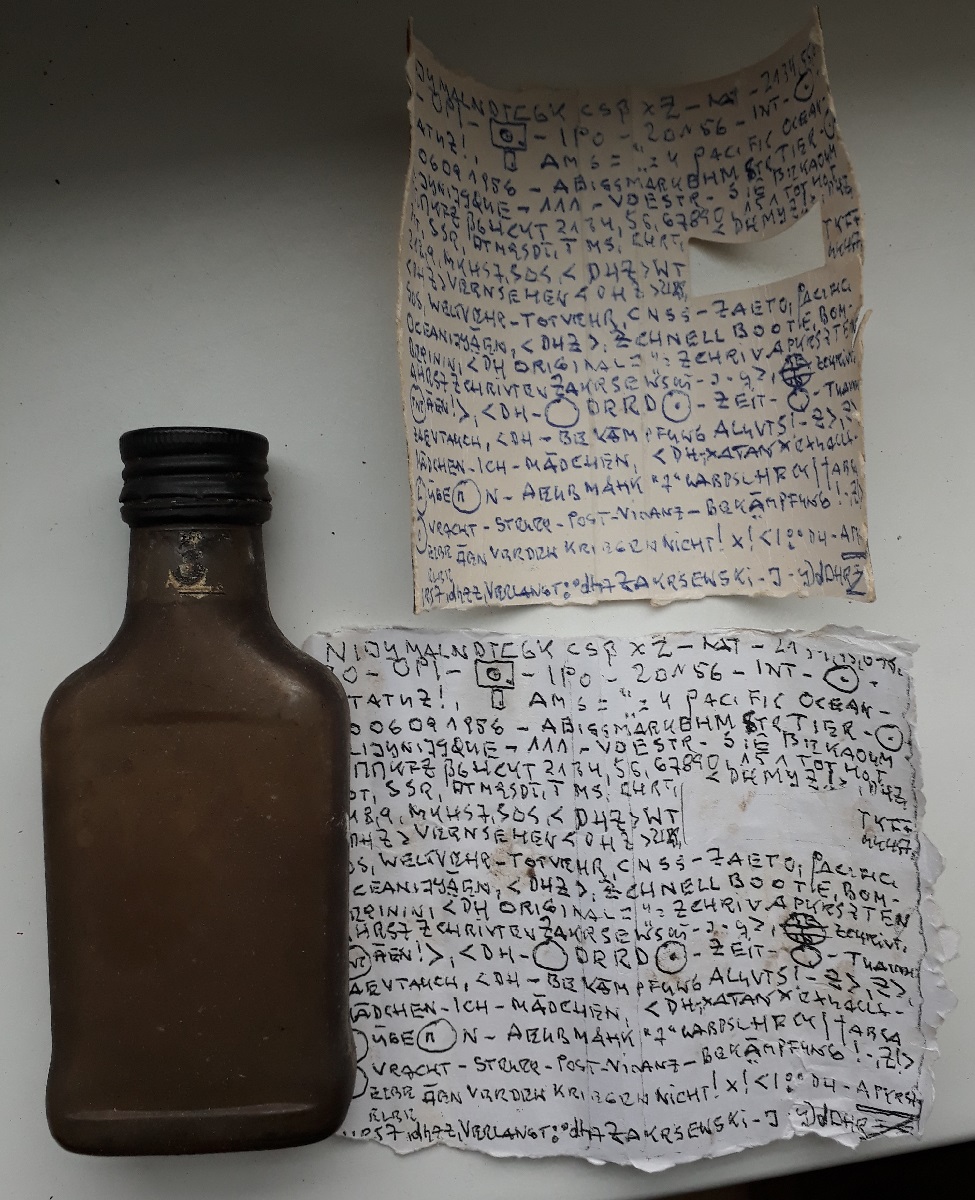
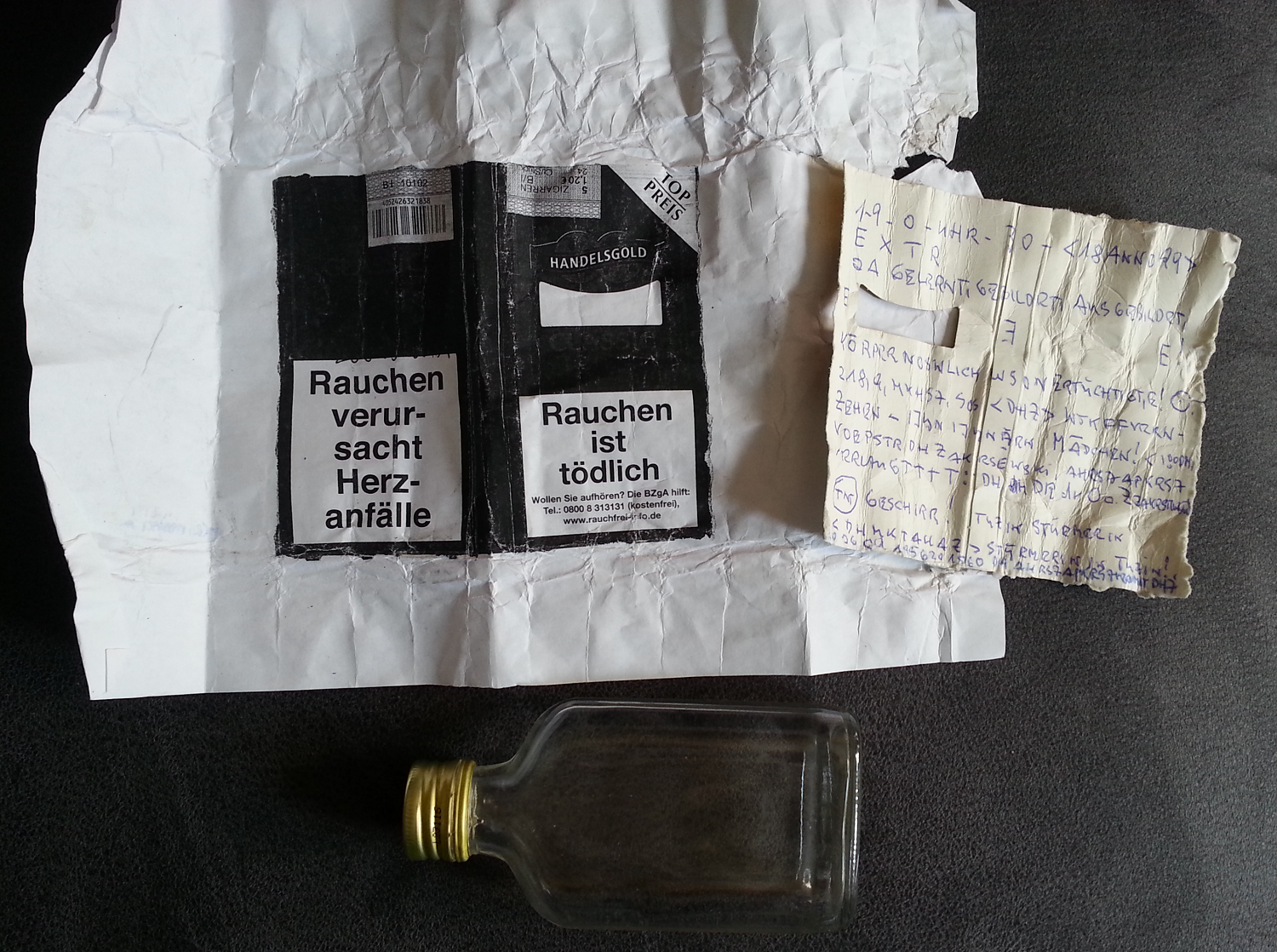
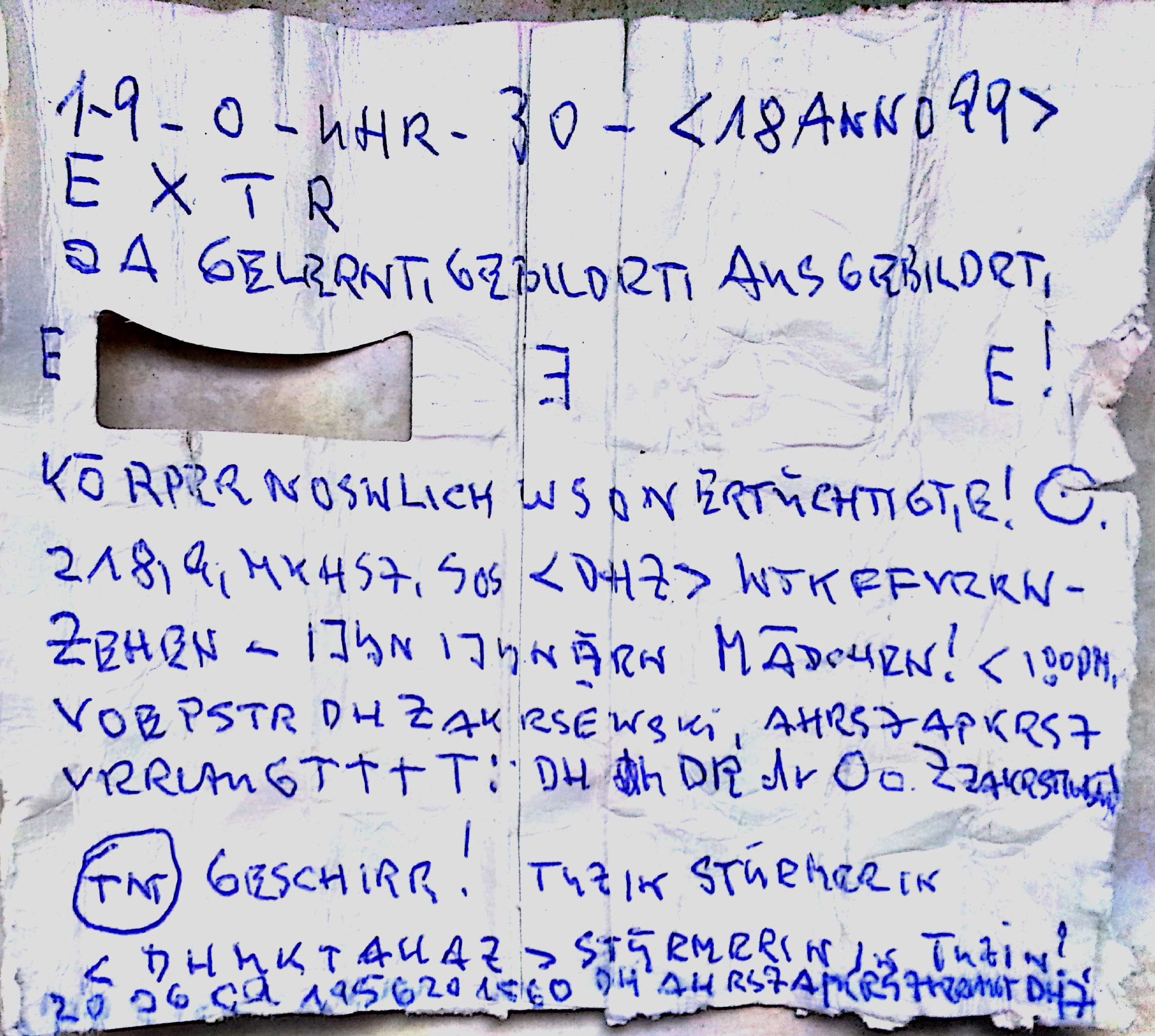
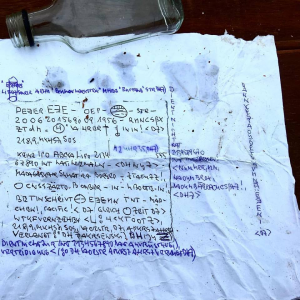

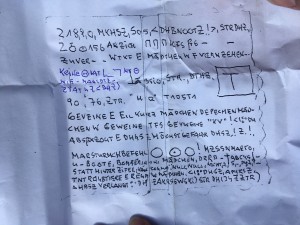
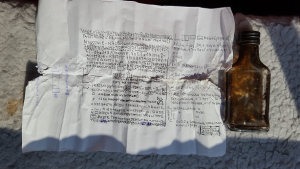
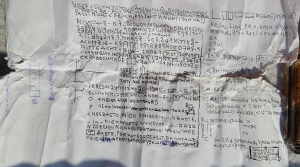

Kommentare (13)